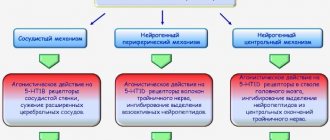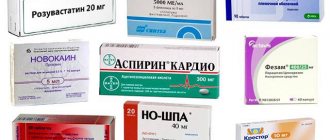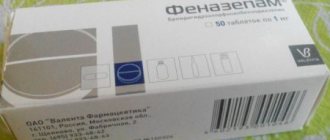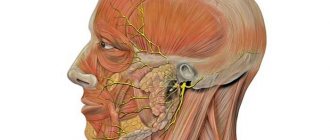The infectious disease, which is known as meningitis, is considered very dangerous both for the patient and for others. With such a diagnosis, a person must be immediately taken to a medical facility, where adequate therapy will be selected for him. The main medications used for treatment are broad-spectrum antibiotics.
It is impossible to cure the disease at home, without consulting a doctor. Various folk remedies, alternative medicine methods and uncontrolled use of drugs can provoke the development of numerous complications and even death. If you suspect meningitis, you need to call an ambulance or go to the hospital yourself.
Meningitis is a pathology in which the membranes of the spinal cord and brain are damaged. Antibiotics for meningitis form the basis of the therapeutic course. In approximately one out of four cases, identification of the pathogen is impossible, as a result of which medications for treatment are often selected by a specialist using an empirical method. And, despite the fact that modern antibiotics have a wide range of effects, the correct selection of drugs requires medical supervision. Therefore, a patient with meningitis should be immediately admitted to a hospital.
How meningitis is treated with antibiotics is discussed below.
Signs of illness
Inflammation of the meninges can be observed either primarily or as a result of infections, which in some cases spread through the spinal cord or from another pathological focus. Depending on the causes that provoke meningitis, it can be divided into viral, bacterial, fungal and protozoal. Cases of development of mixed forms of the disease cannot be excluded.
The conditions for the course of this disease are varied. Clinicians distinguish acute, chronic, subacute and rapid forms of the pathological process. Depending on how quickly inflammation begins, specialists can calculate the course of therapy, its duration and time to recover from the disease. For example, in the chronic form, meningitis develops over several months or years, but in the rapid form of the pathology, a person can die within a few days after the onset of the inflammatory process.
Viral meningitis
Viral meningitis is most easily tolerated by patients; its symptoms are not very pronounced. The disease can occur with tuberculosis. In this case, inflammation of the meninges develops gradually, and the patient exhibits symptoms of intoxication. If his immunity is greatly reduced, this may lead to the development of a fungal form of the disease.
When an infection enters the brain, it begins to quickly spread throughout the tissues of this organ and along the nerve fibers. If not treated promptly, meningitis can lead to serious irreversible complications. People who have had inflammation of the meninges often become disabled, and in the worst case, the disease can cause death. Therefore, correct diagnosis and subsequent treatment play an important role in preventing negative consequences.
Meningitis is treated with broad-spectrum antibiotics, since it is quite difficult to determine the causative agent of the disease. As a rule, the course of treatment lasts at least 10 days until the inflammatory process is eliminated. Next comes weekly therapy, which is prescribed after the patient’s condition has normalized.
Antibiotic therapy for purulent meningitis is extended until complete recovery.
Medicines for the treatment of meningitis
Patients with meningitis are subject to immediate hospitalization. Do not try to treat meningitis with folk remedies and do not delay calling an ambulance at all, since jokes with the infection can easily result in disability or death.
Bacterial and fungal meningitis requires intravenous infusion of large doses of antibiotics. There is no cure for viral meningitis. It goes away on its own within a week. However, all types of meningitis cause exhaustion and pain, and relief of symptoms speeds recovery.
Antibiotics are the drugs of choice for treating meningitis. Let us note that in approximately 20% of cases it is not possible to identify the cause of the disease, so hospitals use broad-spectrum antibiotics in order to affect all possible pathogens. The course of antibiotic therapy lasts at least 10 days. This period increases in the presence of purulent foci in the skull area.
Currently, meningitis in adults and children is treated with penicillin, ceftriaxone and cefotaxime. If they do not give the expected effect, then patients are prescribed vancomycin and carbapenems . They have serious side effects and are used only in cases where there is a real risk of life-threatening complications.
If severe meningitis is observed, the patient is prescribed endolumbar administration of antibiotics, in which the drugs enter directly into the spinal canal.
Penicillin dosage
Penicillin is prescribed at the rate of 200,000-300,000 units/kg, and for infants 300,000-400,000 units/kg per day, which is an average of 24,000,000 units/day for adult patients. Penicillin is administered at 4-hour intervals (6 times a day) in adults and at 2-hour intervals in infants. Higher doses of penicillin are only necessary if treatment is started late or if symptoms of meningoencephalitis are obvious. In such cases, along with intramuscular administration, intravenous administration of benzylpenicillin sodium salt is also indicated - from 4,000,000 to 12,000,000 units/day.
ampicillin sodium salt , oxacillin , methicillin - can be used for purulent meningitis . Ampicillin is administered 2 g every 4 hours intramuscularly or intravenously (up to 12 g/day), for children - 200-400 mg/kg intravenously every 6 hours. Sometimes penicillin is added intravenously with sulfamone methotoxin at 1 -1 day 2 g 2 times, and on subsequent days 2 g 1 time per day.
If you are intolerant to penicillin, use gentamicin (up to 5 mg/kg per day), chloramphenicol (up to 4 g/day), vancomycin (up to 2 g/day). Cephaloridine ( zeporin has a wide spectrum of action .
The optimal spectrum of antibiotics is:
- meningococcus, pneumococcus - benzylpenicillin, or ampicillin, or chloramphenicol, or cephaloridine (6 g/day);
- Afanasyev-Pfeiffer stick - ampicillin and chloramphenicol.
Combined treatment of meningococcal meningitis with several antibiotics has no advantage over massive doses of penicillin or ampicillin.
List of medications used for meningitis
Antibacterial agents
- Amikacin (Amicosit)
- Benzylpenicillin
- Levomycetin succinate
- Meropenem (Meronem)
- Metronidazole (Trichobrol, Flagyl, Trichozol, Trichopolum, Klion)
- Netilmicin (Netromycin, Guardocin)
- Ofloxacin (Ophlocid, Tarivid, Ofloxin)
- Pefloxacin (Perflox, Abactal, Uniclef, Peflacin)
- Cefepime (Maxipim)
- Cefotaxime (Taxam, Claforan)
- Ceftriaxone (Oframax, Rocephin, Megion, Cefaxone)
- Ciprofloxacin (Medociprin, Arflox, Quipro, Aquacipro, Microflox, Tseprova, Quintor, Afenoxin, Proxacin, Ciplox, Ificipro, Tsiprinol, Procipro, Recipro, Liproquine)
Antiviral drugs
- Acyclovir (Virolex, Zovirax)
Antipyretics and painkillers
- Aspirin
- Metamizole sodium (Maxigan, Spazmalgon, Tempalgin, Spazvin, Nospaz, Veralgan, Analgin, Baralgin)
- Paracetamol (Mexalen, Coldrex, Algon, Acetaminophen, Dafalgan, Askofen, Aminadol, Grippostad, Algomin, Volpal, Anti Flu, Pamol, Dynafed, Calpol, Tylenol, Lecadol, Lorraine, Adol, Panadol)
Sedatives
- Diazepam (Valium, Dicam, Relanium, Seduxen, Apaurin)
Corticosteroid hormones
- Dexamethasone (Dexasone, Cortidex, Novomethasone, Daxin, Fortecortin)
- Methylprednisolone (Urbazon, Medrol, Advantan, Solu Medrol, Prednol, Metipred)
Antifungal agents
- Fluconazole (Fungolon, Medoflyukan, Diflazon, Diflucan, Tsiskan, Mikomax, Flucosan, Forkan, Mikosist, Fluzol, Flucostat).
Forecast
Forecast. With timely initiation of treatment, which lasts many months, as a rule, complete recovery occurs. In case of delayed diagnosis, especially if blackouts, focal brain lesions and hydrocephalus are observed, the outcome is unfavorable, and among those who survive, the majority have residual symptoms.
ARTICLES ON THE TOPIC: Vomiting after meningitis How to find out if you have meningitis Vaccine vaccination against meningitis Bacterial meningitis what is it Meningitis with rash symptoms
Drugs
To eliminate the inflammatory process of the meninges, several classes of medications are prescribed:
- Antibiotics of the cephalosporin and penicillin categories (Cefuroxime and Amoxicillin), monobactams. This group also includes carbapenems, aminoglycosides, and fluorochloride agents. These drugs have a pronounced effect due to their good penetrating properties.
- Antibacterial agents with poor permeability through the blood-brain barrier. Such medications include Norfloxacin and Ketonazole.
- Antibacterial medications that do not penetrate the blood-brain barrier. These are Clindamycin and Amphotericin.
Only the attending physician can determine which antibiotics for meningitis are suitable in each specific case. Often, effective treatment requires a combination of several medications from different categories. The specialist can stop treatment only after the patient’s condition has normalized and other manifestations of the disease have been eliminated.
To prevent cerebral edema, which is the most common complication of meningitis, diuretics are prescribed. For detoxification, intravenous infusions of colloid and crystalloid solutions are used. These procedures are quite dangerous and therefore can only be carried out by qualified specialists.
After an inpatient therapeutic course, the patient is sent home, where he must continue treatment and subsequent rehabilitation.
Let's take a closer look at the most effective antibiotics for meningitis.
Preventive measures
To protect yourself and your loved ones from meningitis and not contract an infectious virus, you need to follow some recommendations that will increase your chances of a healthy future without complications.
What to do
- Limiting contact with a person infected with the virus, immediately hospitalizing him and monitoring everyone who came into contact with the patient; After contact, you must wash your hands well, it is best to disinfect them, and follow the rules of hygiene;
- If there is an outbreak of enteroviral meningitis at work, in a team, in the city or in your home, you need to limit visits to these places and monitor hygiene. Not only personal hygiene products, but also vegetables and fruits eaten must be thoroughly washed;
- If you cannot avoid such places, use a mask. You can buy it at the pharmacy or sew it yourself, but it is important to know that it is changed every 3 hours. Otherwise, it becomes not only ineffective, but also dangerous to one’s own health;
- Maintaining hygiene of premises in an apartment or office. Getting rid of all infection-carrying animals (this applies to rodents);
- Do not delay the treatment of ENT diseases, especially chronic diseases that tend to worsen and recur;
- Taking antiviral or antifungal medications when traveling to exotic countries where there is a risk of infection from insects and animals.
To avoid the risk of infection, you must wash your hands thoroughly after each visit to the street, public place or contact with an animal. Monitor your health, promptly consult a doctor if you have any complaints, maintain a normal immune system, exercise, monitor your diet, and get plenty of rest. All these simple rules will help protect yourself and your loved ones from the terrible consequences that meningitis can bring. Don’t joke with your health, trust it to specialists and follow all doctor’s recommendations.
"Cefuroxime"
This drug with antibacterial effects belongs to the category of second-generation cephalosporins and is intended for parenteral administration.
The dosage form of the drug "Cefuroxime" is a powder for the preparation of solutions for intramuscular and intravenous administration: hygroscopic white. The active substance is cefuroxime sodium.
This medication disrupts the process of cell wall synthesis of pathogenic bacteria (bactericidal effect), has a wide range of antimicrobial effects, and is highly active against the following microorganisms:
- gram-negative, including Escherichia coli, Klebsiella spp., Proteus mirabilis, Proteus rettgeri, Providencia spp., Haemophilus influenzae, as well as ampicillin-resistant strains;
- gram-positive, as well as penicillin-resistant strains (except methicillin-resistant), Streptococcus pyogenes, Staphylococcus aureus, Streptococcus mitis, group B Streptococcus, Streptococcus pneumoniae, Clostridium spp., Bordetella pertussis;
- anaerobes - Fusobacterium spp., Peptostreptococcus spp., Peptococcus spp.;
- Salmonella spp., Neisseria meningitidis;
- Haemophilus parainfluenzae and ampicillin-resistant strains.
The following microorganisms are insensitive to the effects of the main active element of this drug: Acinetobacter calcoaceticus, Clostridium difficile, Pseudomonas spp., Listeria monocytogenes, Campylobacter spp., strains of Staphylococcus aureus resistant to methicillin, Legionella spp., Staphylococcus epidermidis, Morganella morganii, Streptococcus faecalis, Enterobacter spp., Serratia spp., Proteus vulgaris, Citrobacter spp.
After administration of the drug intramuscularly, the maximum concentration is observed after 15–40 minutes, after intravenous administration - after 15 minutes. The half-life for both routes of administration is 1 to 1.5 hours. Bonding with plasma proteins is 33–49%. The active substance is not metabolized in the liver and is excreted by the kidneys by 85%. "Cefuroxime" in therapeutic doses is present in pleural fluid, bile, sputum, cardiac muscle, skin and soft tissues.
Indications
Indications for the use of this medication are infectious inflammatory diseases caused by pathogenic organisms sensitive to its effects, including meningitis.
An absolute contraindication to the use of the antibiotic Cefuroxime for meningitis is the presence of intolerance to its substances, including other cephalosporins, penicillins and carbapenems. Relative contraindications are a weakened condition, chronic renal failure, diseases of the digestive tract, including a family history of ulcerative colitis, various bleeding, newborns, prematurity, lactation and pregnancy.
"Norfloxacin"
Another frequently prescribed antibiotic for meningitis, Norfloxacin, is a drug from the fluoroquinolone group, which is used in many areas of medicine for the treatment of inflammatory infectious diseases.
The medicine is produced in tablets for oral administration. The tablets contain the active ingredient - norfloxacin, as well as some additional substances.
This antibiotic for the treatment of meningitis in adults has a wide spectrum of action, highly effective against the following microorganisms:
- gonococci;
- Escherichia;
- Chemophilus influenza;
- enterobacteria;
- Klebsiella;
- chlamydia;
- shigella;
- salmonella;
- staphylococci;
- streptococci.
Tablets are contraindicated for use under the age of 14 years, during pregnancy, lactation, intolerance to substances, liver and kidney failure.
What other antibiotics are prescribed (in tablets) for meningitis?
"Clindamycin"
This pharmacological agent is most often used in the treatment of meningitis in children. It has a wide range of effects and is considered a bacteriostatic, which helps suppress the process of protein production in pathogenic bacteria. The main component of the drug is active against gram-positive and microaerophilic cocci, as well as gram-positive anaerobic bacilli that do not form spores.
Most varieties of clostridia are resistant to this antibacterial agent. In accordance with this, if a patient has an infection caused by these types of strains, it is recommended to initially determine the antibiogram.
After use, the medication is immediately absorbed in the digestive tract. Eating helps reduce the rate of absorption, but does not affect the total concentration of the drug in the blood, which easily penetrates into all tissues and fluids - lungs, tonsils, saliva, pleura, fallopian tubes, wound surfaces, bronchi, muscle and bone tissue, sputum , synovial fluid, gallbladder ducts, appendix. With the development of the inflammatory process in the membranes of the brain, the permeability of the drug through the blood-brain barrier increases.
The largest amount of medicinal substances is observed in the blood approximately an hour after taking the capsule and is excreted from the body within 4 days through the kidneys and intestines.
This pharmacological agent is contraindicated in the following cases:
- high sensitivity;
- lactation;
- hereditary diseases;
- bronchial asthma;
- This antibiotic is not used for meningitis in children under 3 years of age (with a body weight of at least 25 kg);
- pregnancy;
- ulcerative colitis;
- myasthenia gravis.
The drug is prescribed with caution in case of insufficient functionality of the kidneys and liver.
Not everyone knows what antibiotics are used to treat meningitis. However, to have a general understanding of therapy, it is worth studying this issue.
The best and inexpensive tablets for meningitis
Meningitis is a dangerous disease that is diagnosed in both children and adults. Therapy is based on antiviral, antibacterial and antifungal drugs.
The choice of a particular medication takes into account the causative agent of the pathological process. Let's take a closer look at the treatment of meningitis using tablets in our article.
What it is?
Meningitis is an infectious inflammatory disease that affects the membranes of the brain. Pathology can be recognized by the following symptoms:
- headache;
- high body temperature;
- disturbance of consciousness;
- increased light and sound sensitivity;
- numbness of the neck.
Bacteria, fungi, and viruses can affect the development of meningitis. If left untreated, the disease can lead to the development of severe complications, including death.
Difficulties of treatment
The outcome of the disease directly depends on the adequacy and timeliness of therapy. This is impossible to achieve when treating pathology at home, since therapy is carried out in a hospital.
Treatment presents certain difficulties, since some strains of pneumococcus, leading to the development of pathology, are resistant to antibiotics.
Types of tablets for meningitis
“It should be a highly active in vitro compound with activity against most bacterial meningitis pathogens.” Russian Medical Journal
Antibiotics
These drugs can be administered intravenously or taken orally as tablets for meningitis. Prescribed in maximum dosage several times a day. Thanks to antibiotics, it is possible to stop bacteria, prevent complications and improve the patient’s condition.
Important! Every 72 hours after taking the drug, a lumbar puncture must be performed. If the laboratory analysis of the cerebrospinal fluid does not improve, then the antibiotic is changed.
The effect of antibiotics on meningitis
Taking antibacterial drugs for meningitis achieves the following effects:
- Bactericidal mechanism . This is a complete suppression of bacterial growth due to the action of the drug on the vital cellular structures of pathogenic microflora, as a result of which it dies. The effect of the bactericidal drug occurs much faster.
- Bacteriostatic mechanism . Such drugs inhibit the proliferation of bacteria, the growth of microbial colonies, and the body itself, or rather the cells of the immune system - leukocytes, have a detrimental effect on them.
The course of treatment for meningitis with antibiotics can last more than one week. If you feel relief, but do not take the amount of the drug prescribed by your doctor, there is a high probability of a relapse and a recurrent disease will be much more difficult to cure.
Only a therapist or pediatrician (in children) can treat meningitis with antibiotics.
Penetrating properties of drugs
High antibiotics
Drugs in this group include:
- Amoxicillin (penicillin group). This is a broad-spectrum medicine. It is prescribed for the treatment of various bacterial pathologies. Available in the form of tablets and capsules with powder inside. The main component is amoxicillin in trihydrate form. Additional components include: polyvidone, magnesium stearate, talc, sodium carboxymethyl starch, titanium dioxide and hypromellose.
Due to this composition, the drug effectively affects gram-positive and gram-negative microorganisms. Active against microorganisms that are sensitive to penicillin.This includes streptococci and staphylococci, which do not produce penicillin. Under the influence of gastric juice, the medicine is not destroyed and is completely absorbed from the digestive tract.
Prescribe 500 mg 3 times a day. This scheme can be used for both children (over 12 years old) and adults. The cost of the drug in pharmacies of the Russian Federation will be: tablets (250 mg each) - 35-50 rubles, capsules - 100 rubles.
- Cefuroxime (2nd generation cephalosporin group) . A drug with a wide range of effects. It has a bactericidal effect due to inhibition of cell wall synthesis of pathogenic microflora. The medicine is produced in the form of tablets. The duration of treatment does not exceed 7 days. To ensure that the active components of the drug are absorbed by the body as much as possible, take the medicine after meals. The dosage is 250 mg 2 times a day. Cost 1300 rubles.
Average
This group includes the following medications:
- Ketoconazole . The effect of this medicine is to suppress the proliferation of fungal cells, and in large doses leads to the death of microorganisms. Adults are prescribed the drug orally at a dose of 200 mg per day. Take in one dose. If there is no therapeutic effect, the daily dosage can be increased to 400 mg once. For children weighing 15-30 kg, the dosage will be 100 mg once a day. The cost of the drug is 250-310 rubles.
- Norfloxacin . This drug belongs to the group of fluoroquinolones. Has a pronounced bactericidal effect. Affects the bacterial enzyme DNA gyrase. When taken internally, approximately 30-40% is absorbed. It is best to take the medicine before meals, as eating reduces the rate of absorption. The dosage of antibiotics for meningitis is calculated by the doctor individually. The cost of the drug is 118 rubles.
Low
- Amphoterecin . It is a fungicidal antibiotic that binds to the sterol component of the cytoplasmic membrane. This leads to disruption of its protective functions and causes lysis of sensitive fungi. The drug is active against many pathogenic fungi. It is prescribed intravenously through droppers for 2-4 hours. The recommended concentration is 0.1 mg/ml. The cost is 770 rubles.
- Clindamycin . This is a semi-synthetic antibiotic that belongs to the lincosamide group. Its action is reduced to suppressing protein synthesis in the microbial cell. It has a bacteriostatic effect, and at elevated concentrations it is bactericidal against some microorganisms. Prescribe 2400-2700 mg per day for 2-4 administrations. The cost of the drug is 150 rubles.
Contraindications for use
It is not always possible to use antibiotics in the treatment of meningitis, as the following contraindications exist:
- allergy;
- pregnancy;
- childhood;
- liver or kidney diseases.
What effect can they have on the body?
If you do not follow your doctor’s recommendations regarding taking an antibiotic for meningitis, this can lead to the development of side effects:
- Allergies - anaphylactic shock, Quincke's edema, asthmatic bronchitis.
- Toxic effect on the liver, circulatory and digestive systems.
- Neuritis of the auditory nerve, disorders of the vestibular apparatus, development of polyneuritis, damage to the kidneys by toxins.
- Jarisch-Heizheimer reaction (endotoxin shock). Formed when a bactericidal antibiotic is used, which causes massive destruction to bacteria.
- Disruption of normal intestinal microflora.
Antibacterial and antiviral
With the help of antibacterial and antiviral drugs, it is possible to inhibit the interaction between the virus and the cell at different stages of the development of the disease. And for serous meningitis, “drugs with a diuretic effect are also prescribed orally: diacarb 0.1-0.25 g, furosemide 0.001 g per 1 kg of weight.” FEDERAL STATE BUDGETARY RESEARCH INSTITUTION “RESEARCH CENTER FOR MENTAL HEALTH“.
Vitamins
When treating meningitis, vitamins B and C are prescribed. They have a tonic effect on the nervous and muscular systems, improve biochemical processes in the human body. For example, vitamin B1 has an analgesic effect and has a positive effect on the well-being of patients.
Diuretics
These medications are prescribed to prevent brain swelling. When treating meningitis, it is necessary to take a diuretic in combination with drinking plenty of fluids.
The best and inexpensive medicines
Here we will look at a few more drugs that were not covered in the article.
Amoxiclav
This is an antibacterial drug with combined action. The active substance is amoxicillin. This is an antibiotic of the penicillin group with a wide spectrum of effects.
The drug is prescribed for the treatment of such pathologies:
- sinusitis in acute and chronic form;
- retropharyngeal abscess;
- otitis media;
- pneumonia;
- Chronical bronchitis;
- urinary tract infections;
- odontogenic infections;
- gynecological infections;
- meningitis;
- gonorrhea;
- skin and soft tissue infections;
- chancroid;
- bone and joint infections;
- Maxillofacial Surgery;
- orthopedic practice.
Amoxiclav tablets, for meningitis, should be dissolved in ½ glass of water before use. Then stir the resulting mixture and consume. This dosage is calculated for children weighing 40 kg and adults. Price 370 rub.
Aztreons
This antibiotic belongs to the monobactam group. Has a narrow range of influence. Active against some strains of aerobic gram-negative bacteria.
Has a pronounced bactericidal effect. The medicine is prescribed for the treatment of those patients who suffer from infectious diseases caused by microorganisms sensitive to the influence of Aztreonam.
Reference! In addition, the medicine has found active use in the treatment of meningitis and peritonitis. This antibiotic can be used as a prophylactic agent during surgical interventions.
The drug is used parenterally. The powder must be dissolved right before the injection.
For intramuscular administration, dissolve the contents of the bottle in the required amount of liquid. For 500 mg of the substance, take 1.5 ml of water for injection. The cost of this antibiotic is 3850 rubles.
Amphotericin
This is an antifungal antibiotic with a wide spectrum of effects and belongs to the group of polyenes. Intended for parenteral and inhalation use in the treatment of the following pathologies:
- gastrointestinal candidiasis, intestinal candidiasis;
- candidiasis of internal organs;
- chronic granulomatous and disseminated forms of candidiasis;
- coccidioidosis;
- cryptococcosis;
- histoplasmosis;
- North American blastomycosis;
- chromomycosis;
- mold mycoses;
- aspergillosis;
- Meningitis;
- sporotrichosis.
The dosage of the medicine for meningitis is set individually for each patient at the rate of 250 units/kg body weight. The price of the drug is 88 rubles.
Is it possible to buy drugs without a doctor's prescription?
There are a number of medications used to treat meningitis that can be purchased without a doctor's prescription. Despite this, you should not use them without the knowledge of a specialist.
Important! Uncontrolled use of antibiotics can lead to the opposite effect.
Meningitis is a dangerous disease that requires drug treatment. Moreover, the sooner it starts, the higher the chance for a quick and successful recovery. Therapy is complex, because it is important not only to get rid of the symptom, but also to defeat the main cause of the pathological process.
Bibliography
- Lobzin Yu.V., Pilipenko V.V., Gromyko Yu.N. Meningitis and encephalitis Series: Current infectious diseases // St. Petersburg 2006: 123 p.
- Imshenetskaya V.F. // Efficacy of pefloxacin (abactal) for purulent complications in neurosurgery. — Urology and nephrology. 1989; Appendix, 37-40.
- Modai J.
//Potential role of fluoroquinolones in the treatment of bacterial meningitis. Eur J Clin Microb Inf Dis 1991;10:291-5. - Sidorenko S.V. // Ceftriaxone in the treatment of purulent meningitis. Antibiotics and chemotherapy. - 1996. - 41(7/8). — P. 57-61.
- Yakovlev V.P., Yakovlev S.V.
//Cefpirome (Keyten) is an antibiotic of the cephalosporin group. — Moscow, Farmus. 1997. - 112 p.
If you want to consult with the site’s specialists or ask your question, you can do this completely free of charge in x.
And if you have a question that goes beyond the scope of this topic, use the Ask a question above.
"Amphotericin B"
Macrocyclic polyene antibiotic with antifungal properties. It has fungistatic and fungicidal effects depending on the concentration in body fluids and the sensitivity of the infectious pathogen. Binds to ergosterols (sterols) found in the cell membranes of drug-sensitive fungi. As a result, the permeability of the membranes is disrupted and the release of intracellular elements into the extracellular space and the death of the fungus are observed.
Contraindications to the use of this pharmacological agent are:
- hypersensitivity;
- chronic renal failure;
- lactation.
It is used with caution for kidney diseases, amyloidosis, hepatitis, liver cirrhosis, anemia, agranulocytosis, diabetes mellitus, and pregnancy.
Prevention of meningitis with antibiotics
Meningitis is a rather dangerous disease that affects the brain and increases the likelihood of developing other severe pathological conditions that can lead to very serious complications and even death. Therefore, it is necessary to take preventive measures to prevent the development of this disease. This applies to cases of recent contact with a person with meningitis. In such a situation, it is advisable to take broad-spectrum antibacterial drugs. The list of such drugs includes the above medications, as well as any drugs from similar pharmacological groups.
We told you what antibiotics treat meningitis. Next, let's look at the reviews.
Making a diagnosis of a disease
The diagnosis of meningitis is made to the patient only in an inpatient setting, after a full examination and puncture. Based on the results obtained, they treat a person who is so seriously ill.
WE RECOMMEND WATCHING: How do the symptoms of meningitis manifest?
Methods used to diagnose the disease:
- initial examination by a specialist,
- prescribing an MRI procedure necessary to clarify the location of the affected areas of the brain,
- X-ray of the brain,
- electroencephalogram,
- taking a puncture of cerebrospinal fluid from the lumbar spine.
Puncture (lumbar) is performed for a dual purpose: to diagnose the disease and to reduce the patient’s intracranial pressure. This type of intervention must be carried out with extreme caution, because with meningitis, the pressure of the cerebrospinal fluid increases. If the puncture is performed incorrectly, rapid fluid leakage can occur, which can lead to numerous complications and even death.
The obtained samples are subjected to laboratory testing, and if there are high levels of protein, lymphocytes or neutrophils in the cerebrospinal fluid, a diagnosis of “meningitis” is made. In addition to determining the composition of the liquid itself, studies are carried out to help identify the causative agent of the disease, tests are done to determine the body’s tolerance to different groups of antibiotics and to identify antibodies that help cope with the disease.
If meningitis is suspected, a lumbar puncture is required.
The procedure helps to temporarily alleviate the patient’s condition until the optimal treatment regimen is selected. But in some types of disease, it is the puncture that becomes the moment that helps reverse the severe course of the disease and leads to recovery.
Puncture is the main method of treatment when diagnosing viral or serous meningitis; with its help, it not only reduces increased intracranial pressure, but also treats with antibiotics that are injected directly into the cerebrospinal fluid.
Reviews
The number of reviews about antibacterial drugs is very large, and they are very diverse. For meningitis, according to patients, a variety of antibiotics are used, and it depends on what type of pathogen causes the disease in each case. Good reviews about the use of such antibiotics for meningitis in adults and children as Amoxicillin, Clindamycin, Norfloxacin, Gentamicin, Cefuroxime. According to patients or their parents (in the case of the disease in young children), these medications are highly effective, quickly stop inflammatory processes and do not cause a variety of side effects. These reactions in a disease such as meningitis are usually blurred, and this is due to the fact that the disease itself is quite severe, so patients call the most noticeable reactions after using antibiotics digestive disorders, excessive sweating, and abdominal pain.
Characteristics of the pathology
Bacterial meningitis is a rapidly progressing infectious disease. The inflammatory process is initiated by an infectious agent and is localized in the area of the meninges and in the cavity located between the pia mater and the arachnoid membrane (subarachnoid space). Main symptoms:
- Pain in the head area.
- Significant increase in body temperature.
- Rigidity (hardness) of the muscles in the occipital area.
- Tachycardia.
- Increased sensitivity to light and sound stimuli.
Analysis of cerebrospinal fluid obtained through lumbar puncture allows a reliable diagnosis. Infectious agents are most often meningococci or pneumococci. The disease caused by meningococci can be fatal within a few hours. Meningococcal sepsis is a common cause of bilateral hemorrhagic adrenal infarction (Waterhouse-Friderichsen syndrome).
Haemophilus influenzae infection is a common cause of meningitis in children under 6 years of age. In the older age group (over 50 years), against the background of a decrease in their own immune defense, pathology more often develops due to the penetration of Listeria or Staphylococcus aureus bacteria. The spread of an infectious agent throughout the body most often occurs by hematogenous (through the bloodstream) route. Factors that provoke infection and the development of inflammation:
- Surgical intervention at any location.
- Injuries in the head area.
- Penetrating wounds.
- Chronic infections in the nasopharynx and ear canals (otitis media, sinusitis, rhinitis, mastoiditis).
- Large-scale damage to the skin (burns, abscesses).
Concomitant systemic damage (meningococcal sepsis) is manifested by murmurs when listening to the heart (endocarditis is possible), skin rashes, and convulsive syndrome. The rapid development of the inflammatory process is accompanied by severe neurological symptoms and infectious-toxic shock.











